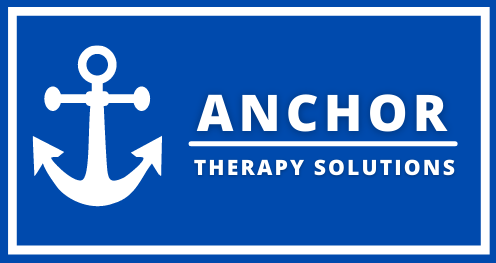De Quervain's Tenosynovitis
© 2021-2023 Anchor Therapy Solutions, PLLC.
Are you experiencing pain and tenderness in the base of your thumb and wrist, making simple tasks such as opening jars or gripping objects difficult and painful? You might be suffering from a common condition known as De Quervain's Tenosynovitis.
This condition can affect anyone, regardless of age or profession, and can significantly impact your daily activities and productivity. In this blog post, we will explore what De Quervain's Tenosynovitis is, its causes and symptoms, how it can limit your functionality, and treatment options that can help alleviate your pain and improve your quality of life.
What is De Quervain's Tenosynovitis?
De Quervain's Tenosynovitis, also known as De Quervain's disease or De Quervain's syndrome, is a condition that causes pain and inflammation in the tendons on the side of the wrist and base of the thumb. It is a common condition among adults and can affect anyone regardless of age, gender, or profession.
What Causes De Quervain's Tenosynovitis?
De Quervain's Tenosynovitis occurs when the tendons in the wrist and base of the thumb become inflamed and swollen. This inflammation is usually caused by overuse of the tendons or repetitive motion of the wrist and thumb, such as playing sports, instruments or using a computer mouse for extended periods. It can also occur during pregnancy or after giving birth due to hormonal changes in the body.
Symptoms of De Quervain's Tenosynovitis
The most common symptoms of De Quervain's Tenosynovitis include pain and tenderness on the side of the wrist and base of the thumb, which may extend into the forearm. The pain may worsen when gripping or twisting an object, and may also be accompanied by swelling, stiffness, and a "catching" or "snapping" sensation when moving the thumb.
Limitations Caused by De Quervain's Tenosynovitis
De Quervain's Tenosynovitis can cause significant limitations in daily activities such as writing, typing, gripping objects, and even simple tasks such as opening jars or turning doorknobs. This can lead to decreased productivity and difficulty in performing daily tasks. In severe cases, it can also lead to increased pain with activities, loss of grip strength and decreased range of motion in the thumb and wrist.
How can occupational therapy help?
If you're struggling with De Quervain's Tenosynovitis, you may have noticed that everyday tasks like writing, typing, or even holding a cup can be incredibly painful. Fortunately, occupational therapy can help you manage your symptoms and get back to your daily activities.
So, what exactly is occupational therapy, and how can it help with De Quervain's Tenosynovitis?
Occupational therapy is a healthcare profession that focuses on helping people with physical, mental, or cognitive disabilities achieve their goals and participate in their everyday activities. Occupational therapists work with people of all ages and backgrounds to help them develop skills, modify their environment, and use adaptive equipment to improve their quality of life.
When it comes to De Quervain's Tenosynovitis, occupational therapists can play a critical role in managing the symptoms of the condition. Here are a few ways that occupational therapy can help:
1. Education and self-management strategies
Occupational therapists can teach you about the condition, its causes, and ways to manage the symptoms. They can also help you develop self-management strategies, such as rest breaks, stretches, and modifications to your daily activities to reduce pain and inflammation.
2. Range of motion exercises
Range of motion exercises can help improve the flexibility and mobility of your wrist and thumb, which can reduce pain and stiffness. Occupational therapists can teach you how to perform these exercises safely and effectively.
Our therapists at Anchor Therapy Solutions in New Bern have combined decades of experience with hands on therapy for our patients. Various techniques include:
IASTM, Active release techniques, nerve gliding, myofasical release, cupping therapy, paraffin, ultrasound therapy and beyond.
4. Strengthening exercises
Strengthening exercises can help improve the strength and endurance of the muscles and tendons in your hand and wrist. Occupational therapists can guide you through a variety of exercises that target the affected areas.
5. Ergonomic assessments and modifications
Ergonomic assessments can help identify areas of your workplace or home environment that may be contributing to your symptoms. Occupational therapists can recommend modifications to your workspace or provide you with adaptive equipment to help reduce strain on your wrist and thumb.
6. Splinting or Bracing
Our board certified therapists have combined decades of experience in recommending and modifying various braces/splints for all diagnoses including De Quervain’s Tenosynovitis.
Prevention of De Quervain's Tenosynovitis
To prevent De Quervain's Tenosynovitis, it is important to avoid repetitive motions that strain the tendons in the wrist and base of the thumb. If possible, take frequent breaks during activities that require repetitive motion and stretch your hands and wrists regularly. Using ergonomic tools and maintaining good posture can also help reduce the risk of developing this condition.
In conclusion, De Quervain's Tenosynovitis is a common condition that can cause significant limitations in daily activities. By taking steps to prevent this condition through proper ergonomics and good hand and wrist hygiene, you can reduce your risk of developing De Quervain's Tenosynovitis and maintain your quality of life.
And remember, by working with our board certified occupational therapists at Anchor Therapy Solutions can develop a personalized plan to manage your symptoms and improve your ability to participate in your daily activities.
If you're experiencing pain or discomfort in your wrist or thumb, talk to your healthcare provider today about a referral to Anchor Therapy Solutions or contact us today to setup an evaluation!
© 2021-2023 Anchor Therapy Solutions, PLLC.


